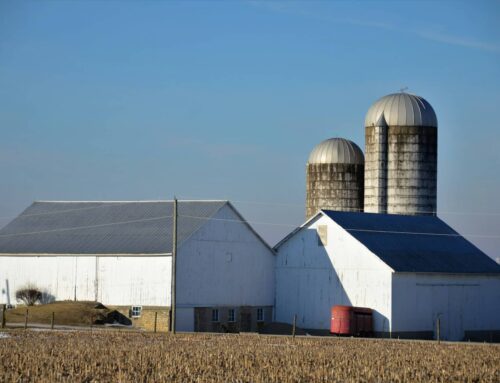A new proposed rule from the Environmental Protection Agency perpetuates the failed legacy of the Renewable Fuels Standard, which continues to cost taxpayers, consumers, and the environment.
On December 5, 2024, the EPA proposed to once again decrease the amount of cellulosic biofuel required under the Renewable Fuels Standard (RFS) for 2024, citing a shortfall in production in 2023 and a projected shortfall this year. This announcement adds to mounting evidence that the RFS, a federal mandate that requires a certain level of biofuels be blended into U.S. transportation fuel, has failed to deliver on its promise to move the biofuel market away from food- and fuel-based fuel (like corn ethanol and soy biodiesel) and towards more sustainable fuel alternatives.
The Renewable Fuel Standard (RFS) is regulated using a tradable credit system, where obligated parties (fuel refiners and importers) can meet the mandate by either selling the required biofuels volumes or purchasing excess credits from other parties. Cellulosic biofuel (e.g. biogas from landfills or biomass like switchgrass or tree residue) is a subset of the “advanced,” non-food biofuels required under the RFS.
The failure of mandates to manifest markets is most stunning with cellulosic biofuel. When the RFS was created, Congress expected cellulosic biofuels to make up 44 percent of the RFS mandate by 2022. Instead, due to lower than anticipated production, they comprised just 2.1 percent. The proposed rule announced earlier this month would once again lower the volume of cellulosic biofuel mandated under the RFS, from 1.09 billion gallons to 880 million gallons for 2024.
This perennial failure of the RFS to conjure cellulosic biofuels is concerning because it leaves the conventional biofuels of corn ethanol and “advanced” soy biodiesel to take up increasingly larger chunks of the overall mandate. Corn ethanol and soy biodiesel already make up the majority of U.S. biofuel consumption and carry huge liabilities for taxpayers. Using food and feed for fuel distorts markets, resulting in higher food and feed prices and more climate and environmental liabilities as carbon-rich grasslands and wetlands are converted into row crop production.
And as the EPA is not proposing to change the total advanced biofuel obligation, soy biodiesel will almost certainly fill in the 210-million-gallon gap for this year.
Congress created the RFS in 2005 and greatly expanded it in 2007, requiring 9 billion gallons of biofuels to be consumed in 2008 and ascending to 36 billion gallons in 2022. Despite this guaranteed market and billions of dollars in federal subsidies, the U.S. consumption (and production) of advanced biofuels—particularly cellulosic biofuels—has consistently failed to meet mandated volumes.
Congress’s dream of 36 billion gallons of biofuels consumed in 2022 was not met. And again in 2022, just like every year since 2014, the EPA was forced to lower the congressionally-mandated biofuel volume obligations, this time from 36 billion gallons to 21 billion gallons. Recent RFS biofuels volumes for 2023-2025, now set by the EPA, remain far under 36 billion gallons.
Federal supports for conventional biofuels, like the RFS, were once promised to be a “bridge” to advanced and cellulosic biofuels, but they have failed to spur meaningful production of non-corn and non-soy-based biofuels. Congress never intended for the RFS to be filled with food- and feed-based biofuels that increase prices for consumers, distort markets, and worsen climate change. It’s time to end the mandate and let the mature biofuels industry stand on its own two feet.










